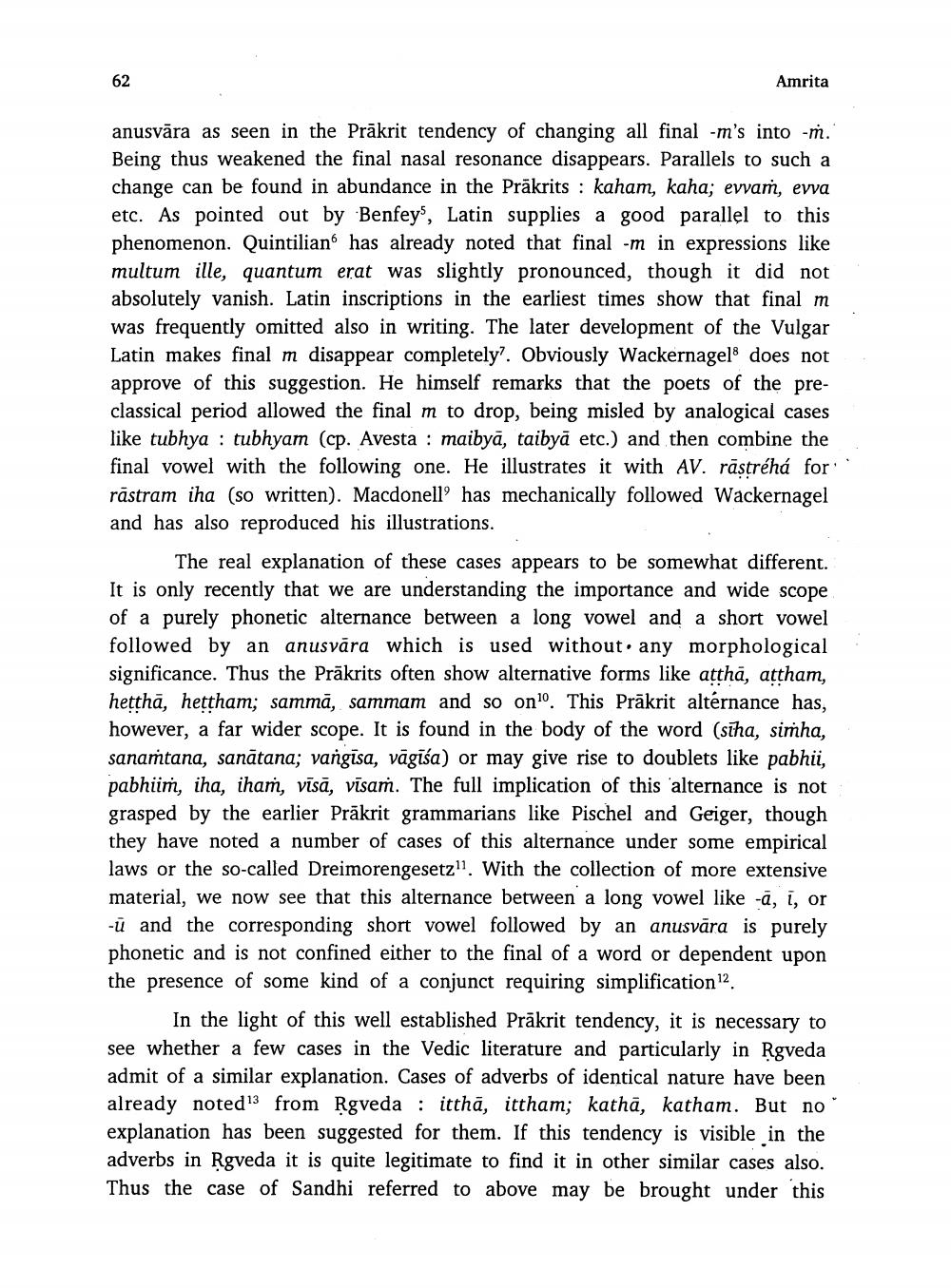________________
Amrita
anusvāra as seen in the Prākrit tendency of changing all final -m's into -m. Being thus weakened the final nasal resonance disappears. Parallels to such a change can be found in abundance in the Prākrits : kaham, kaha; evvam, evva etc. As pointed out by Benfeys, Latin supplies a good parallel to this phenomenon. Quintilian has already noted that final -m in expressions like multum ille, quantum erat was slightly pronounced, though it did not absolutely vanish. Latin inscriptions in the earliest times show that final m was frequently omitted also in writing. The later development of the Vulgar Latin makes final m disappear completely?. Obviously Wackernagels does not approve of this suggestion. He himself remarks that the poets of the preclassical period allowed the final m to drop, being misled by analogical cases like tubhya : tubhyam (cp. Avesta : maibyā, taibyā etc.) and then combine the final vowel with the following one. He illustrates it with AV. rastréhá for rāstram iha (so written). Macdonell' has mechanically followed Wackernagel and has also reproduced his illustrations.
The real explanation of these cases appears to be somewhat different. It is only recently that we are understanding the importance and wide scope of a purely phonetic alternance between a long vowel and a short vowel followed by an anusvāra which is used without any morphological significance. Thus the Prākrits often show alternative forms like atthā, attham, hetthā, hettham; sammā, sammam and so on. This Prākrit alternance has, however, a far wider scope. It is found in the body of the word (stha, simha, sanamtana, sanātana; vangīsa, vāgīša) or may give rise to doublets like pabhii, pabhiim, iha, iham, vīsā, vīsam. The full implication of this 'alternance is not grasped by the earlier Prākrit grammarians like Pischel and Geiger, though they have noted a number of cases of this alternance under some empirical laws or the so-called Dreimorengesetz". With the collection of more extensive material, we now see that this alternance between a long vowel like -ā, i, or -ū and the corresponding short vowel followed by an anusvāra is purely phonetic and is not confined either to the final of a word or dependent upon the presence of some kind of a conjunct requiring simplification 2.
In the light of this well established Prākrit tendency, it is necessary to see whether a few cases in the Vedic literature and particularly in Rgveda admit of a similar explanation. Cases of adverbs of identical nature have been already noted 13 from Rgveda : itthā, ittham; kathā, katham. But no explanation has been suggested for them. If this tendency is visible in the adverbs in Rgveda it is quite legitimate to find it in other similar cases also. Thus the case of Sandhi referred to above may be brought under this




